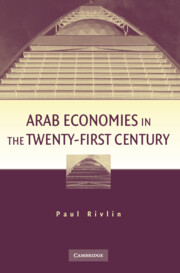9 - Palestine
The Making and Unmaking of a State
Published online by Cambridge University Press: 05 June 2012
Summary
This chapter examines the development of the Palestinian population and economy in the West Bank and Gaza. From 1948 until 1967, the West Bank was occupied by Jordan. In 1950, it was annexed and its 400,000 residents were given Jordanian citizenship. Despite this, the development of the area was neglected and most of Jordan's development was concentrated on the East Bank. The Gaza Strip was occupied by Egypt in 1948 and its development was also neglected. By 1950 it had a population of 200,000. As a result, when Israel occupied these areas in 1967, it took over an economy that was very poor, with Gaza even less developed than the West Bank. There were refugee camps in both areas, occupied by those who had fled from the area that became Israel in 1948.
From 1967, the economy was characterized by increasing dependence on Israel. Israel supplied nearly all its imports and from 1970 on provided employment to an increasing number of Palestinians. Employment was both legal (with Palestinians receiving Israeli work permits and Social Security benefits) and illegal. Between 1967 and the outbreak, in 1987, of the First Intifada (Palestinian uprising against Israel), the economy grew faster than the population: GNP per capita in the West Bank rose from $550 in 1968 to $2,070 in 1993 in 1986 prices, while in Gaza it rose from $375 to $1,090.2 The structure of the economy was notable for the paucity of its infrastructure and the lack of manufacturing industry.
- Type
- Chapter
- Information
- Arab Economies in the Twenty-First Century , pp. 192 - 217Publisher: Cambridge University PressPrint publication year: 2009

